What is Sri Lankan cuisine?
Sri Lankan cuisine is a vibrant and flavorful testament to the island’s rich cultural tapestry, drawing significant influences from India and the Netherlands. This culinary tradition is distinguished by a vast array of sweet, savory, spicy, and medicinal dishes that are native to Sri Lanka. Locals cherish the art of cooking with an abundant variety of spices, which are readily available across the country at affordable prices.
A typical Sri Lankan household might have a rich assortment of herbs and spices that season their meals. The cuisine is deeply intertwined with the nation’s traditions and customs, offering tourists an authentic way to immerse themselves in Sri Lankan culture.
The food scene in Sri Lanka is dynamic, with new dishes occasionally joining the ranks of traditional favorites. A notable addition is “kottu,” a popular street food made from chopped roti, mixed with vegetables, eggs, spices, and meat. This dish has become a cultural staple, especially among friends reuniting after some time apart, where sharing a plate of kottu is a common way to celebrate their gathering.
What other cuisines are present in Sri Lanka? Is there international food?
In addition to its rich local cuisine, Sri Lanka offers a diverse array of international foods that cater to various tastes and preferences. In urban areas, particularly around Colombo, you can find a variety of global cuisines
Western Cuisine: There’s a widespread availability of Western foods. From a classic English breakfast to burgers and fries, these dishes are commonly served in numerous cafes and restaurants throughout the country.
Fast Food: International fast-food chains such as Subway, KFC, and McDonald’s have a strong presence in Sri Lanka, providing familiar options for those seeking a quick and comforting meal.
Indian and Chinese Cuisine: Given the geographical proximity and historical ties, Indian and Chinese cuisines are also prominently featured in Sri Lanka. These restaurants range from casual dining spots to upscale eateries, offering everything from spicy Indian curries to flavorful Chinese stir-fries.
Middle Eastern Cuisine: While not as prevalent, Turkish and Arabic cuisines are available but mostly concentrated in the capital city, Colombo. These restaurants typically offer a range of traditional Middle Eastern dishes, including kebabs, falafel, and shawarma.
Luxury Dining: The numerous star-rated hotels scattered across the island provide a plethora of dining options. These establishments often feature restaurants that serve international cuisines, ensuring that virtually any culinary desire can be satisfied, whether you’re in the mood for Italian pasta, Japanese sushi, or French haute cuisine.
Thus, whether you’re craving local flavors or international dishes, Sri Lanka’s culinary landscape is equipped to offer a delightful dining experience.
Is Sri Lankan food halal?
Yes, in Sri Lanka, it is quite straightforward to find halal food due to the significant Muslim community spread throughout the country. Here’s how you can access halal food options in Sri Lanka
Availability in Supermarkets: Most supermarkets in Sri Lanka carry halal-certified meat, catering to those who prefer or require halal options. This makes it convenient for individuals who wish to cook their own meals.
Restaurants: A considerable number of restaurants across the island serve dishes prepared with halal meat. It’s always a good idea to inquire with the staff or waiters about halal options. They are typically knowledgeable and willing to assist customers in finding or preparing meals that meet halal standards.
Halal Certification: Some establishments may even display halal certification, which can provide additional assurance to diners seeking strictly halal meals.
Overall, Sri Lanka’s culinary scene is inclusive, allowing visitors and locals alike to enjoy a wide range of dining experiences that respect dietary restrictions and preferences.
Is it cheap to eat in Sri Lanka?
Eating in Sri Lanka can be quite affordable, especially when exploring local cuisine options. Here’s a breakdown of what you can expect in terms of cost:
Street Food and Local Eateries: These are typically the most budget-friendly options. Delicious meals can often be purchased for under $4 USD, offering a wide variety of choices such as kottu, rice and curry, hoppers, and more. Despite the low prices, the quality of street food is often very high, featuring fresh ingredients and authentic flavors.
Mid-Range Restaurants: These establishments provide a great balance between cost and comfort, offering a more diverse menu that might include both local and international dishes at reasonable prices.
Fine Dining and Luxury Hotels: For those looking to splurge on a meal, Sri Lanka has its share of upscale restaurants and star-rated hotels that serve gourmet meals, including international cuisine. These options are pricier and cater primarily to tourists and those seeking a luxury dining experience.
In summary, whether you’re on a tight budget or willing to indulge in a lavish meal, Sri Lanka offers culinary experiences that can accommodate a wide range of preferences and budgets. Local restaurants and street vendors, in particular, provide some of the most authentic and enjoyable meals at very affordable prices.
Is cuisine, food & drink in Sri Lanka good for kids?
Cuisine in Sri Lanka is generally very suitable for children, with plenty of options that cater to younger palates. Here are a few aspects to consider:
Quality of Ingredients: Sri Lanka places a strong emphasis on the quality and safety of its food products. Many ingredients are locally grown, ensuring freshness and adherence to safety standards set by the government. This focus on high-quality, fresh ingredients makes the food not only delicious but also nutritious.
Mild Options Available: While traditional Sri Lankan cuisine is known for its rich spices, there are plenty of milder options that are well-suited for children. Dishes like hoppers (a type of pancake made from fermented rice batter and coconut milk) and string hoppers (steamed rice noodle cakes) are generally not spicy and are often enjoyed by kids.
Kid-Friendly Favorites: Kottu (a dish made by stir-frying pieces of roti with vegetables and optional meats) is another popular choice among children. It can be customized to be less spicy and is both filling and enjoyable for young eaters.
Availability of Sweets and Snacks: Sri Lankan sweets like milk rice (kiribath), coconut toffees, and sweet pancakes are also favorites among children and can be a good option for snacks or desserts.
International Cuisine: For families visiting from abroad, international cuisine is readily available, especially in tourist areas and larger cities. This means that familiar foods like pasta, burgers, and pizzas are also accessible if children prefer these options.
Overall, the food in Sri Lanka is diverse enough to cater to both adventurous and cautious young eaters, making it a family-friendly destination from a culinary perspective.
Is Sri Lankan food good for vegetarians and vegans?
Sri Lanka is indeed a fantastic destination for vegetarians and vegans. The local cuisine offers a wide variety of plant-based options, thanks to the country’s substantial Tamil community and the general prevalence of vegetarianism within the culture. Here are some key aspects that make Sri Lankan food particularly accommodating for vegetarians and vegans:
Wide Variety of Vegetarian Dishes: Traditional Sri Lankan vegetarian cuisine is rich and varied, featuring an array of curries, rotis, dosas, and other dishes made from fresh, natural ingredients. Vegetables, legumes, and rice form the basis of many meals, cooked with an assortment of spices that provide rich flavors without the need for meat.
Vegan-Friendly Options: Many Sri Lankan dishes are naturally vegan, avoiding dairy and other animal products. Coconut milk is commonly used as a dairy alternative, providing a creamy texture to curries and desserts. Dishes such as poori, chappathi, and various types of dosai (including ghee thosai and masala thosai) offer delightful plant-based eating experiences.
Tamil Cuisine: The influence of the Tamil culture, which is predominantly vegetarian, means that vegetarian and vegan food is not only available but also integral to the country’s culinary offerings. Tamil restaurants are widespread and provide authentic vegetarian meals that are both satisfying and flavorful.
Availability of Specialized Restaurants: In recent years, there has been a growth in the number of eateries specifically catering to vegetarian and vegan diets. These establishments often highlight the versatility of plant-based ingredients, creating dishes that are both innovative and deeply rooted in traditional flavors.
Street Food and Casual Dining: Even casual street food vendors and local eateries typically have a selection of vegetarian and vegan options, making it easy to eat plant-based meals on the go.
With its rich culinary traditions and a wide range of vegetarian and vegan-friendly dishes, Sri Lanka can provide a delicious and varied dining experience for those following plant-based diets.
Is cuisine, food & drink in Sri Lanka good for gluten intolerant people?
Unlike in Western countries, awareness of gluten intolerance is not yet widespread in Sri Lanka. So if you are gluten intolerant, you may have a hard time trying to verify the gluten content of your meal. In fact, you may find that few locals have even heard of the condition. This is mainly because gluten intolerance is not a common problem among Sri Lankan people.
Here are a few of Sri Lanka’s most famous traditional dishes.
Rice & Curry
A typical Sri Lankan Rice & Curry meal
A typical Sri Lankan rice and curry meal epitomizes the heart of Sri Lankan cuisine, offering an impressive variety of curry combinations to accompany perfectly cooked rice. This staple dish is so integral to daily life that most Sri Lankans partake in at least one rice and curry meal per day, with some families indulging in up to three such meals. Rooted in Sri Lanka’s rich agricultural history as a hydraulic civilization, this meal typically features a main protein such as egg, fish, beef, chicken, or pork, accompanied by around three vegetable curries. These curries are expertly blended to complement each other, creating a harmonious and satisfying meal that has nourished generations.
Milk Rice (Kiribath)
Milk Rice (Kiri Bath) with a side of Katta Sambol
Milk Rice, or Kiribath, is a cherished traditional dish in Sri Lanka, its name deriving from the Sinhalese words “Kiri” (milk) and “Bath” (rice). This beloved dish is made by first boiling rice for about 15 minutes, which is then simmered with coconut milk and a pinch of salt until the rice is tender and has fully absorbed the milk. Kiribath is incredibly versatile, commonly served with sweet accompaniments like Kithul Pani (palm syrup) or sugar, making it perfect for breakfast or a dessert. Alternatively, it pairs excellently with savory sides such as dry fish, chicken, beef, or spicy condiments like Katta sambol or Lunu miris, offering a delightful balance of creamy and fiery flavors in one meal.
Milk Rice, or Kiribath, holds a significant cultural importance in Sri Lanka as a dish symbolizing good fortune and prosperity. Traditionally prepared during the Sinhala & Tamil New Year on April 14th, it is believed to usher in success for the upcoming year. This dish also played a poignant role on the day following the defeat of the LTTE (Tamil Tigers), when people across the nation cooked Kiribath; volunteers served it to weary travelers and daily commuters, celebrating peace and new beginnings. Similarly, on Vesak, the Buddhist festival commemorating the birth, enlightenment, and death of Buddha, Kiribath is prepared to mark the occasion with joy and hope.
Accompanying Kiribath often is Katta Sambol, a fiery and robust condiment. True to its name, derived from the word ‘sambol’ which denotes a dish made from raw ingredients, Katta Sambol is prepared with red chili flakes, onions, Maldive fish flakes, and other spices to deliver a hot and spicy flavor profile. Despite its intensity, it’s a popular choice to accompany not only Milk Rice but also Hoppers and Pittu, enhancing meals with its bold, spicy kick that encourages diners to indulge in just a few more scoops.
String Hoppers
String Hoppers with curries
String Hoppers, known locally as “Idiyappam,” are a delightful and essential part of Sri Lankan cuisine. Made from a thick rice flour batter, this dish is crafted by extruding the batter through a press to form delicate, noodle-like strands, which are then either steamed or fried to create a light and airy texture. String Hoppers are incredibly versatile and are typically served as a breakfast dish or a dinner accompaniment.
A must-try for anyone visiting Sri Lanka, String Hoppers are commonly paired with a variety of flavorful sides. One of the most popular accompaniments is Pol Sambol, a spicy coconut relish that perfectly complements the mild, soft texture of the hoppers. Additionally, they are often served with a range of curries— from rich and creamy coconut curries to spicy meat or vegetable gravies—making them a satisfying and filling meal that encapsulates the culinary diversity of Sri Lanka.
Hoppers
Traditional Sri Lankan breakfast with egg hoppers and lunu miris
A traditional Sri Lankan breakfast often features Egg Hoppers, a delightful and popular dish across the island. Hoppers, or “Appa,” are made from a fermented batter of rice flour and coconut milk, which is poured into a small, wok-like pan to create a bowl-shaped pancake. This unique cooking method gives the hopper a soft, spongy center and delightfully crispy edges.
Egg Hoppers elevate this dish by cracking an egg into the batter as it cooks, resulting in a protein-rich breakfast that combines the smooth texture of the egg with the crispy pancake. For those with a sweet tooth, hoppers can also be enjoyed with a drizzle of honey, providing a sweet contrast to the savory version.
Accompanying the hoppers, Lunu Miris—a spicy sambol made from onions, chili flakes, lime juice, and salt—is often served to add a fiery kick. This combination of Egg Hoppers with Lunu Miris is not only a staple for breakfast but also enjoyed as a lunch item and is one of the most sought-after street foods in Sri Lanka, beloved for its simple ingredients and complex flavors.
Pittu
The famous breakfast dish, Pittu
Pittu is a famous breakfast dish in Sri Lanka, cherished for its unique texture and versatility. This traditional meal consists of steamed cylinders made from ground rice flour mixed with coconut shavings, creating a delightful, lightly textured staple that pairs wonderfully with a variety of accompaniments.
Known as “Puttu” in Tamil, Pittu is particularly renowned for its ability to absorb liquids, making it the perfect counterpart to rich, flavorful gravies. It is typically served with coconut milk, which adds a creamy texture, or with hearty curries such as beef or chicken, which provide a satisfying savory contrast to the mildness of the Pittu.
Enjoyed predominantly as a breakfast dish, Pittu is a common sight not just in homes but also across many hotels and restaurants throughout Sri Lanka. Its popularity stems from its simplicity and the comforting, filling nature of the meal, making it a staple in the Sri Lankan diet and a must-try for visitors seeking an authentic taste of the local cuisine.
Parippu (Dhal)
A dish of Dhal next to Roti
Dhal, also known as Parippu in Sri Lanka, is a beloved staple in the local cuisine, often finding its way into various meals alongside rice or string hoppers. This dish has earned a special place in the hearts of both Sri Lankans and international visitors due to its delightful taste and comforting qualities.
Parippu is crafted from lentils simmered in rich coconut milk, which infuses the dish with a creamy texture. The lentils are also cooked with a robust blend of spices that enhance their natural, earthy flavor, creating a dish that is not only nutritious but outrageously delicious. The combination of these ingredients results in a flavorful and hearty meal that complements a variety of sides.
Commonly served with roti, an unleavened bread that’s perfect for scooping up the dhal, this pairing is both satisfying and versatile, making it a popular choice for any meal. Whether enjoyed as part of a larger spread or as a simple dish on its own, dhal with roti encapsulates the essence of Sri Lankan culinary tradition, offering a taste that is as rich in flavor as it is in cultural significance.
Pol Sambol
A fresh dish of Pol Sambol
Pol Sambol is a vibrant and essential accompaniment in Sri Lankan cuisine, known for its simple preparation yet impressive flavor. This popular dish is made from a mix of finely grated or desiccated coconut, finely chopped onions, red chili flakes, tamarind paste, and a pinch of salt. These ingredients are combined to create a spicy and tangy condiment that adds a burst of flavor to any meal.
Pol Sambol pairs exceptionally well with a variety of dishes, enhancing the taste of staples such as rice, hoppers, string hoppers, and bread. It’s also a fantastic complement to curry roti, where it adds a refreshing contrast to the rich flavors of the curry. Its versatility and delightful taste make it a must-try for tourists exploring Sri Lanka, offering a true taste of the island’s culinary diversity.
Whether you’re looking to spice up a simple meal or want to add an authentic Sri Lankan touch to your dining experience, Pol Sambol is a delightful choice that never fails to impress. Its ability to meld with almost any dish makes it a beloved favorite among locals and a recommended delicacy for visitors.
Roti
Roti with a side dish of Chicken curry
Roti is a versatile and beloved element of Sri Lankan cuisine, serving as a delightful complement to a variety of dishes, especially curries. In Sri Lanka, this version of flatbread is typically made from wheat flour and comes in several delicious forms, each with its own unique preparation and style.
Some popular types of roti include:
Gothamba Roti: A simple, soft flatbread that is perfect for wrapping or dipping into curries.
Parata: A layered version that is flaky and buttery, offering a richer texture.
Pol Roti: A coconut-infused roti that brings a subtle sweetness and additional texture with the inclusion of grated coconut.
Roti serves as a popular alternative or addition to rice in many meals and pairs exceptionally well with a variety of curries. One classic pairing is Roti with Chicken Curry—a rich and flavorful dish made with tender chicken pieces simmered in a blend of spices and coconut milk. This combination balances the soft and subtle taste of the roti with the bold, spicy flavors of the curry, making for a satisfying meal that highlights the culinary traditions of Sri Lanka.
Whether enjoyed as a snack, a side, or a main meal, roti with chicken curry exemplifies the delicious interplay of textures and flavors that Sri Lankan cuisine has to offer. It’s a must-try for anyone looking to explore the authentic tastes of this vibrant culinary culture.
Kottu Roti
Kottu Roti is a quintessential street food dish that hails from the Batticaloa district of Sri Lanka and has become a beloved staple across the country over the past few decades. This dynamic and flavorful dish is made by stir-frying shredded pieces of roti with a mix of vegetables, creating a hearty and satisfying meal.
The versatility of Kottu Roti is one of its key appeals, as it can be customized with a variety of additional ingredients to suit different tastes. Options include:
Egg Kottu: Adding scrambled eggs to the mix for a richer flavor.
Meat Kottu: Incorporating beef, chicken, or even seafood for a protein-packed dish.
Cheese Kottu: A more recent and popular variant where cheese is melted into the kottu for a creamy, indulgent twist.
Among these, Cheese Kottu stands out as a favorite for many. It’s generally the most luxurious option, with a good quality Cheese Kottu costing around 450 Rs. (approximately 3 USD), reflecting its status as a special treat.
Kottu Roti not only offers a delicious taste experience but also a unique auditory one, as the process of chopping and mixing the ingredients on a flat iron skillet creates a rhythmic, musical sound that is iconic in Sri Lankan night markets and food stalls.
Whether you’re looking for a quick, tasty meal or want to dive deep into the flavors of Sri Lankan street cuisine, Kottu Roti provides a perfect blend of texture, flavor, and cultural richness. It’s a must-try dish that beautifully showcases the innovation and diversity of Sri Lankan cooking.
Sour fish curry
Sour Fish Curry, or Ambul Thiyal, is a renowned and traditional dish from Southern Sri Lanka, celebrated for its unique flavor and historical significance. Originally developed as a method for preserving fish, this curry has become a beloved staple of Sri Lankan cuisine.
The preparation of Ambul Thiyal involves cubing fish—typically tuna, known for its firm texture and rich flavor—and sautéing it with a blend of aromatic spices. Key spices used include garlic, turmeric, black pepper, and cinnamon, each adding depth and complexity to the dish. However, the defining characteristic of Ambul Thiyal is the use of Goraka, a dried fruit similar to tamarind. Goraka imparts a distinctive sourness to the curry, setting it apart from other fish dishes with its tart and tangy flavor profile.
Ambul Thiyal is not just a meal; it’s a reflection of Sri Lankan culinary art, offering a taste that is as rich in history as it is in flavor. The combination of spices and the sourness of Goraka make this dish a must-try for anyone wanting to experience authentic Sri Lankan cuisine at its best. It’s typically served with rice and can be found in various eateries across the island, from simple roadside food stalls to high-end restaurants.
Ceylon Tea
Ceylon Tea, a signature export of Sri Lanka, is a must-try for anyone visiting this beautiful island nation. Known globally for its high quality, rich aroma, and robust flavor, Ceylon Tea is an integral part of Sri Lankan culture and history.
When served, Ceylon Tea is typically enjoyed black, often with a splash of milk to soften its briskness. For those with a sweet tooth, it can be sweetened with Kithul jaggery, a traditional unrefined sugar made from the sap of the Kithul palm, which adds a rich, caramel-like sweetness without overpowering the natural flavors of the tea.
For a true appreciation of its distinct characteristics, it is recommended to initially try Ceylon Tea without any additives. This allows you to experience the pure, vibrant flavors of the tea leaves, cultivated and harvested in the lush, verdant tea estates that dot the Sri Lankan highlands.
Many tours in Sri Lanka, such as the journey from Kandy to Unawatuna, include tea tastings where visitors can explore various blends and preparations of Ceylon Tea. These tastings not only enhance the travel experience but also provide insight into the intricate processes of tea production, from leaf to cup. Sampling Ceylon Tea in its homeland offers a memorable and authentic slice of Sri Lankan life, making it a pivotal experience for every visitor.
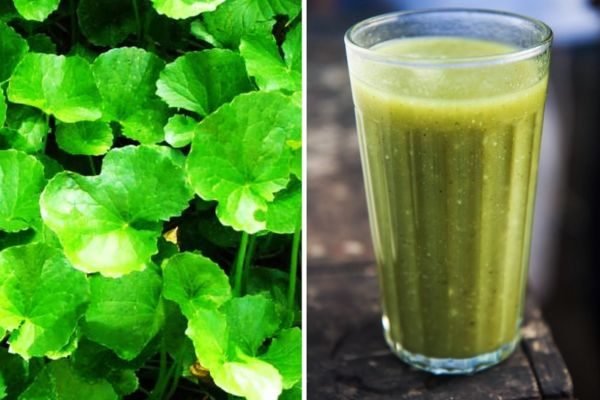
Kola Kanda
Kola Kanda is a traditional Sri Lankan herbal porridge, celebrated not only for its unique flavor but also for its myriad health benefits. This vibrant green concoction is made from a blend of native herbs, rice, and coconut milk, creating a nutritious and refreshing meal or beverage.
The primary appeal of Kola Kanda lies in its medicinal properties. It is commonly believed to aid digestion, boost the immune system, and help lower cholesterol levels. Traditionally, this herbal mixture was consumed early in the morning on an empty stomach, serving as a natural tonic to energize and prepare the body for the day ahead.
Additionally, Kola Kanda is known for its cooling effects, making it particularly favorable during the hot and humid monsoon season in Sri Lanka. Its soothing properties are appreciated by locals and visitors alike, especially after a day exposed to the tropical climate.
Typically served in a bowl or glass, Kola Kanda resembles a porridge in texture and is often enjoyed as a healthy start to the day. For anyone visiting Sri Lanka, trying Kola Kanda offers a unique glimpse into the traditional dietary practices of the island and provides a tasty, healthful experience.
Toddy & Arrack
Toddy and Arrack are two of Sri Lanka’s most traditional alcoholic beverages, each holding a special place in the island’s cultural and historical tapestry.
Toddy is a mildly alcoholic drink made from the sap of palm trees, such as the coconut palm. This sap is collected in a process known as “Toddy tapping,” where skilled toddy tappers climb coconut trees and traverse from one tree to another on tightropes to harvest the sap from the flowers. The drink is enjoyed in its natural, fermented state and has a sharp, sweet taste that captures the essence of the palm.
Arrack, on the other hand, is a distilled spirit that is derived from the further fermentation and refinement of toddy. Considered one of the oldest distilled spirits in the world, with a history tracing back to the 5th century AD, Arrack holds a venerable status as the national spirit of Sri Lanka. It boasts a richer and deeper flavor profile compared to toddy and is commonly enjoyed mixed with local ginger ale, creating a refreshing and flavorful beverage that is both aromatic and invigorating.
Both toddy and arrack are integral to Sri Lankan celebrations and social gatherings, offering a taste of the island’s rich heritage. Whether sipped slowly to enjoy their distinct flavors or mixed into cocktails, these drinks provide a unique and authentic Sri Lankan experience. For visitors, trying toddy and arrack can be a delightful way to connect with the local culture and enjoy beverages that have been cherished across generations.
The King Coconut
The King Coconut, with its vibrant orange hue, is an iconic and refreshing beverage choice in Sri Lanka, particularly well-suited for the warm tropical climate. Native to the island, this variety of coconut is prized for its sweet, hydrating water and is a common sight at markets and along street stalls, where it is often sold by vendors ready to serve it fresh.
King Coconut water is not only delicious but also packed with nutrients, making it a healthy alternative to packaged drinks. It’s rich in electrolytes, which makes it an excellent natural hydrant, perfect for replenishing fluids on a hot day. Vendors typically serve King Coconut by cutting open the top, making it easy to drink straight from the shell— a sustainable practice that aligns well with environmental consciousness, especially when opting out of plastic straws.
Beyond its use as a beverage, coconut in various forms is integral to Sri Lankan cuisine. Coconut oil is commonly used for frying and sautéing, lending a subtle sweetness to dishes. Coconut milk is another essential ingredient, often added to curries to temper the heat of the spices, providing a creamy texture and rich flavor. Additionally, grated coconut flesh is used to make spicy sambol, a beloved condiment that accompanies everything from bread to rice, enhancing meals with its bold flavor.
For anyone visiting Sri Lanka, enjoying a King Coconut is a must—not only does it offer a taste of local flavor, but it also provides a refreshing pause in the day, allowing you to savor a piece of Sri Lankan heritage.

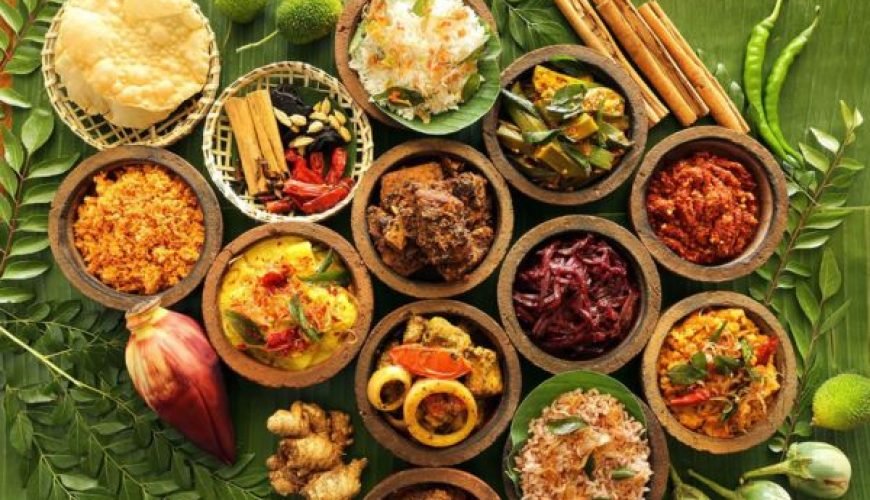



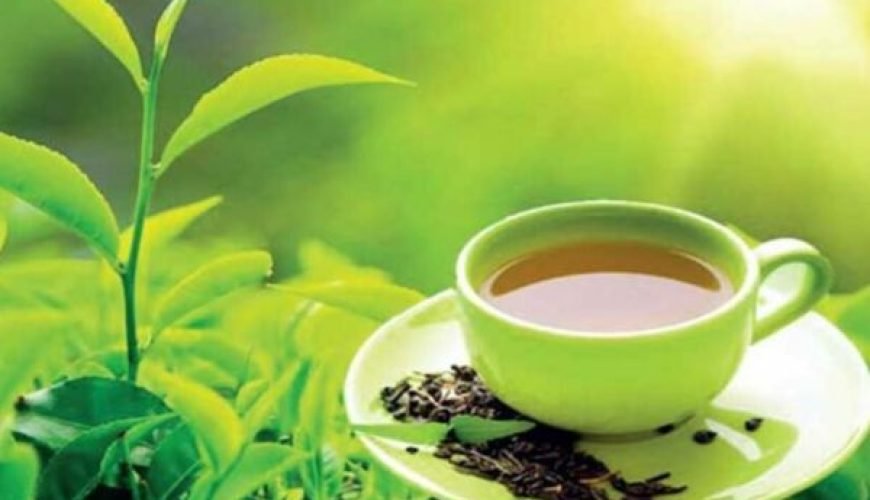

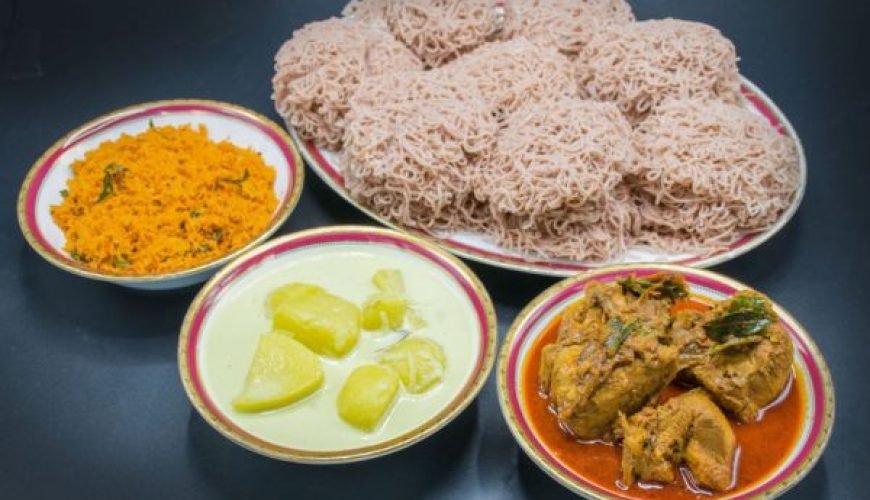


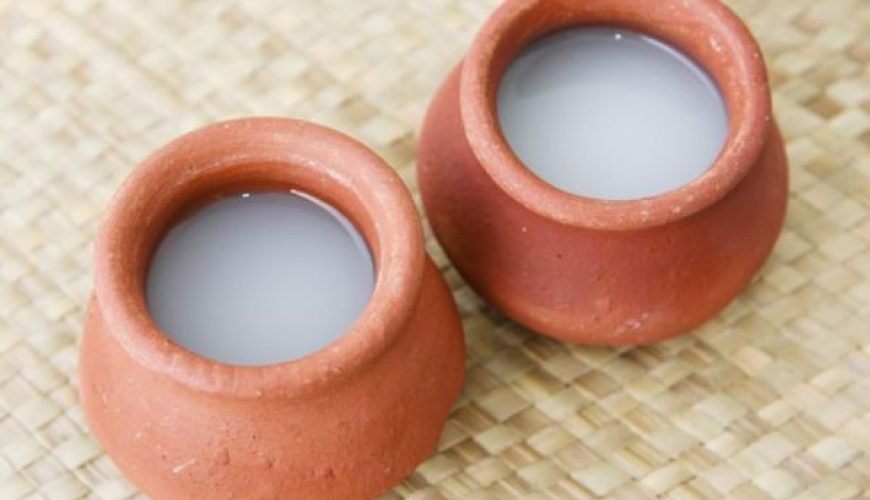
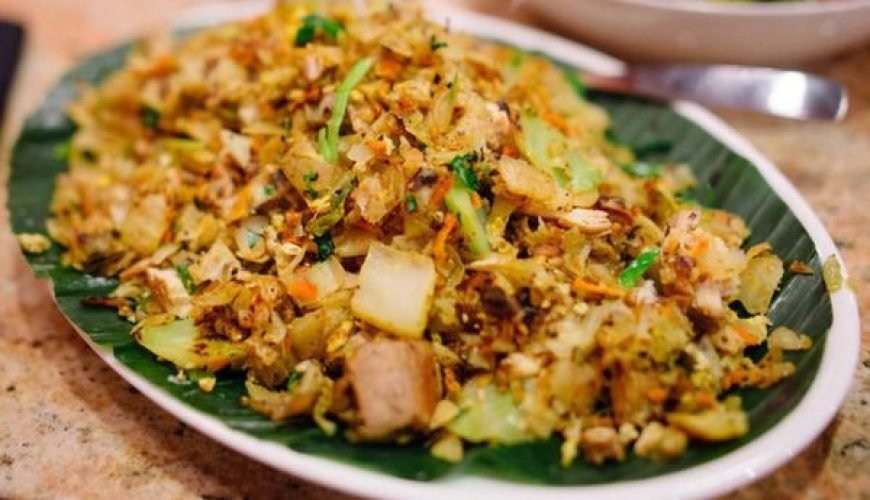

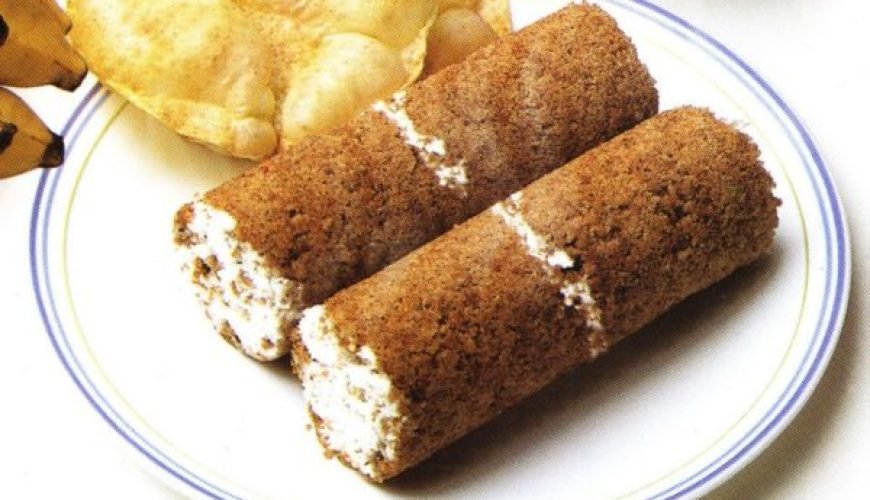



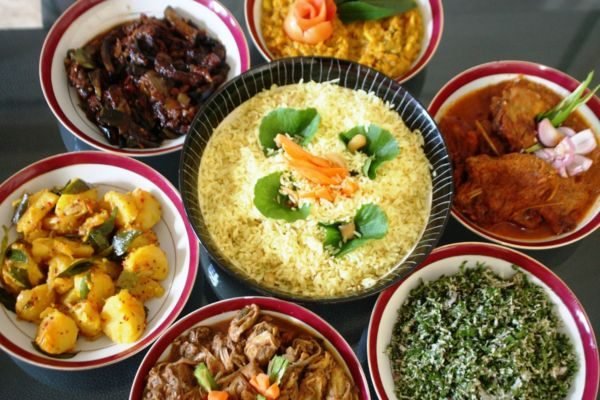
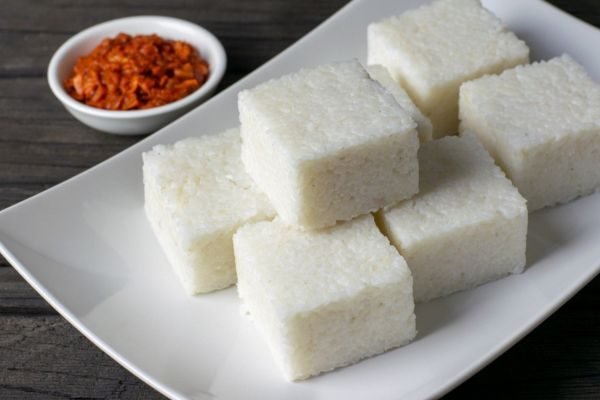
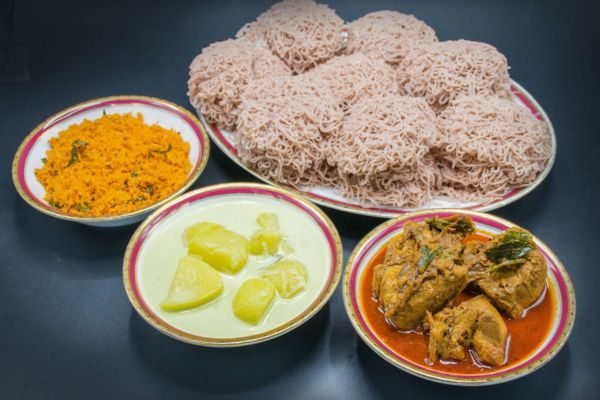
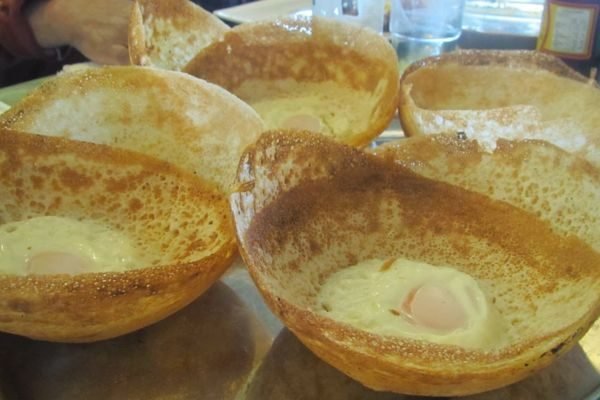

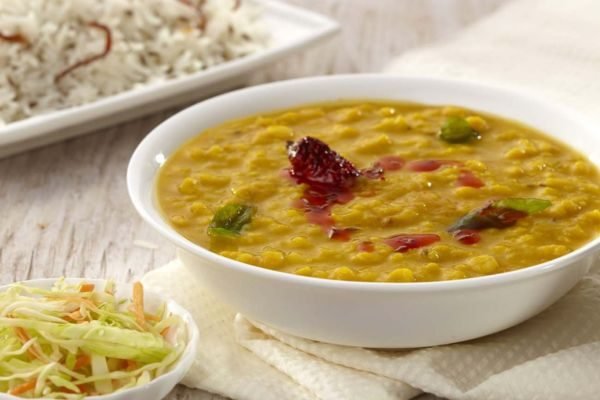
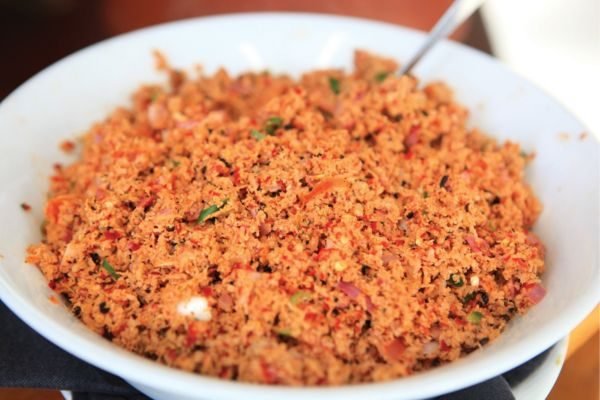
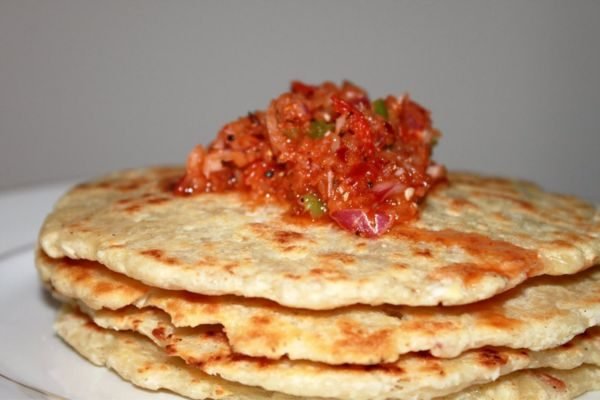
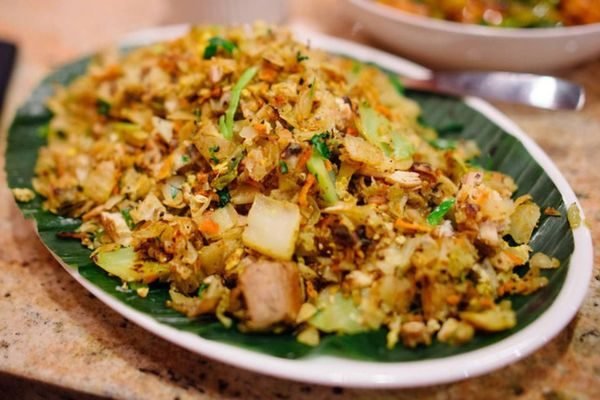
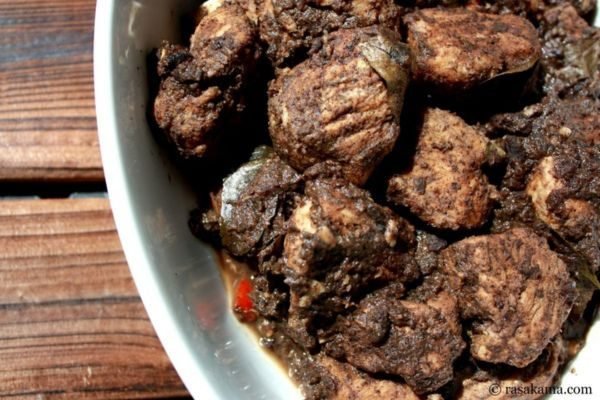

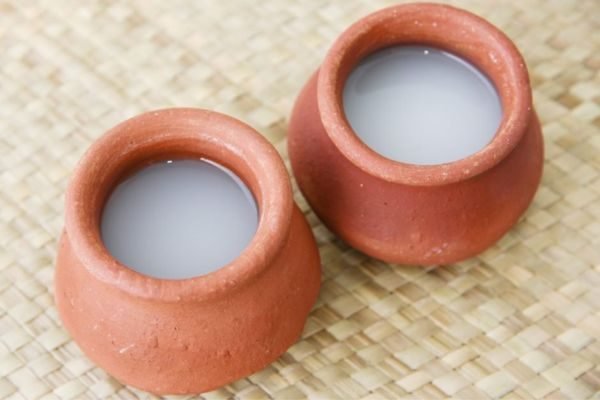
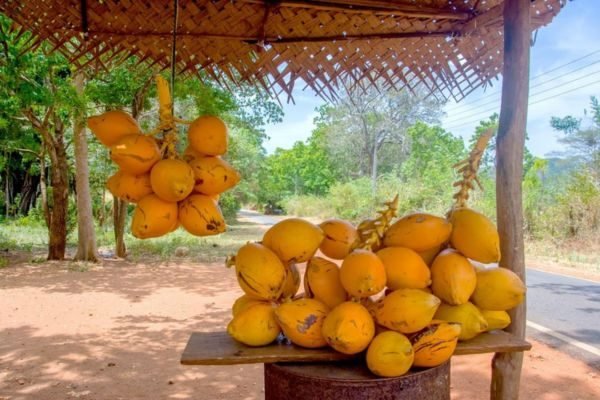
0 Comment